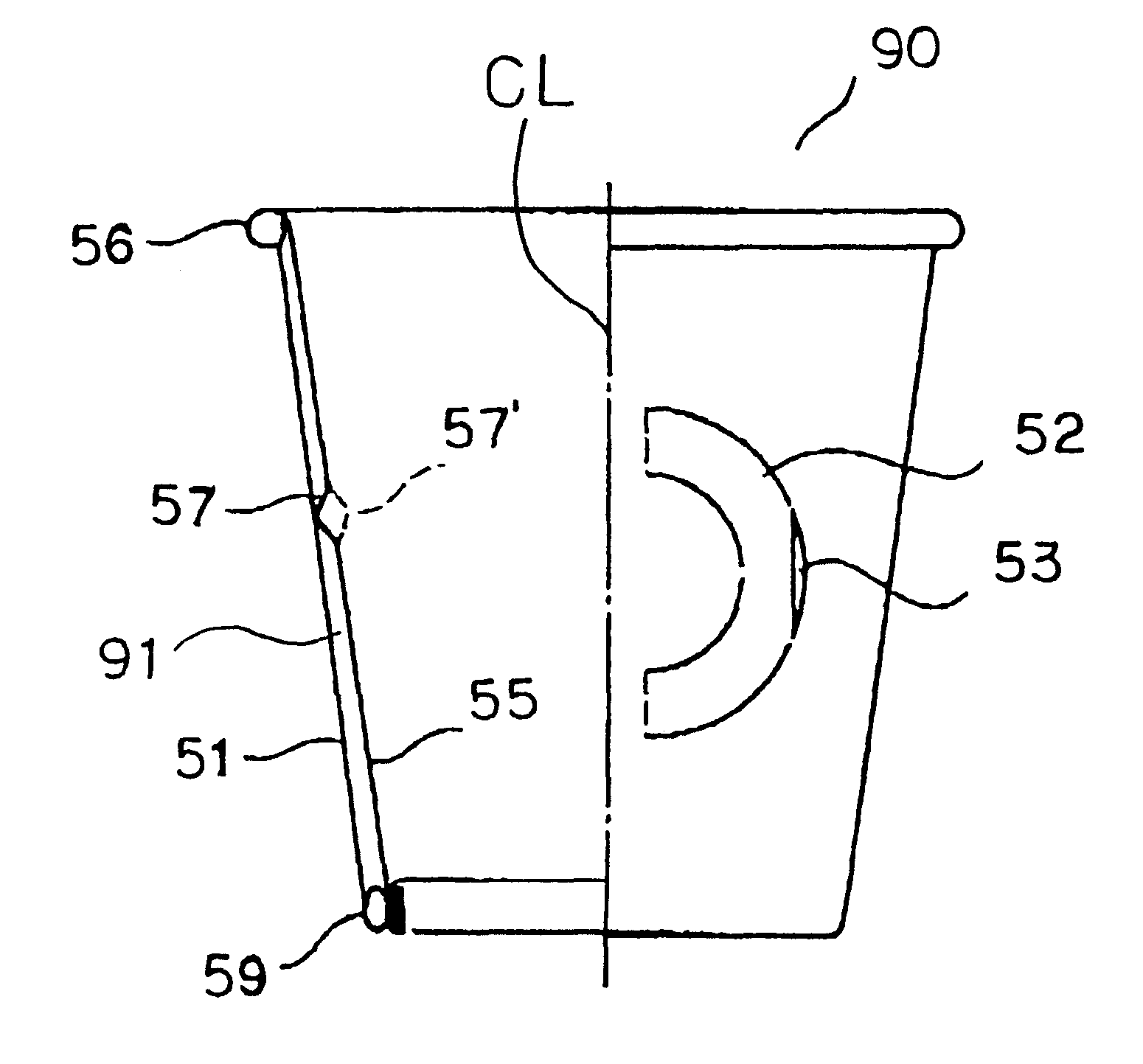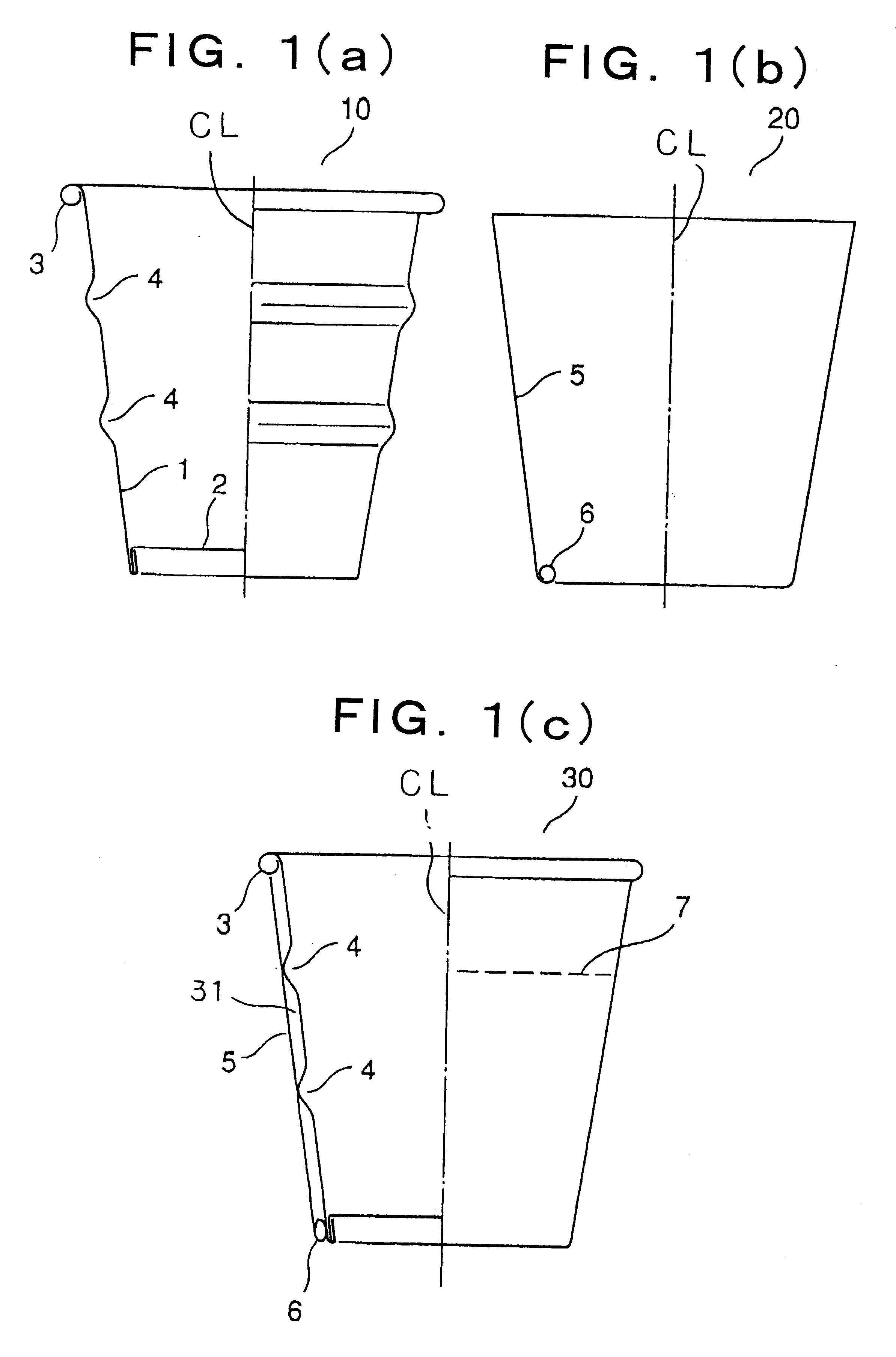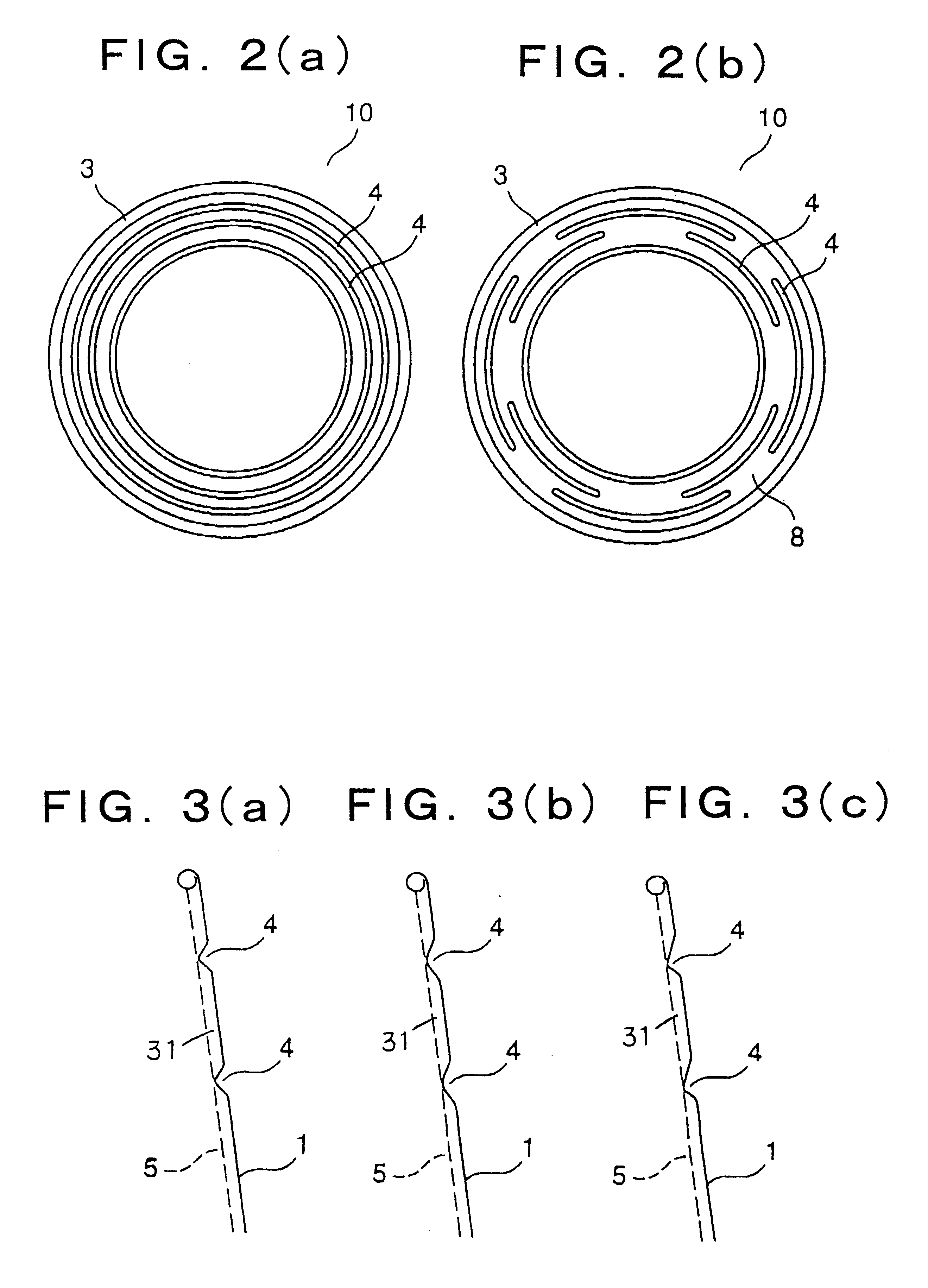Heat-insulating container
a technology of heat-insulating containers and containers, which is applied in the field of heat-insulating containers, can solve the problems of irregular bottom of the heat-insulating container, inability to give the high-grade appearance of design, and inability to solve the recesses on the outer periphery of the container, etc., and achieves the effect of improving rigidity, reducing the number of voids, and ensuring the quality of the container
- Summary
- Abstract
- Description
- Claims
- Application Information
AI Technical Summary
Benefits of technology
Problems solved by technology
Method used
Image
Examples
first embodiment
The sample of the heat-insulating container 30 of the present invention was prepared in accordance with the following manner.
The tubular member 20 was brought into contact with the cup body 10 at the two horizontal ribs 4 and the side wall of the bottom and the contact portions were joined with each other by means of an acrylic emulsion type adhesive agent. The sample of the invention having the heat-insulating space 31, in which the upper gap was 1 mm and the lower gap was 2 mm, was prepared in this manner. The heat-insulating container 100 as shown in FIG. 1, which had no horizontal rib 4, was prepared as a comparative example.
Boiling water having a temperature of 95.degree. C. was poured into each of the samples in an amount of 240 cc so as to reach the level line for the boiling water. After the lapse of time of 2 or 3 minutes, the middle portion of the shell of each of the samples was held by a hand to make a tactile inspection of temperature on the outer surface of each of the...
example 2
The sample of the heat-insulating container 90 of the second embodiment of the present invention was prepared in accordance with the following manner. Dimensions and angles of the components of the container are indicated in FIG. 10.
The cup body 70 was provided with a single horizontal rib 57. The single horizontal rib 57 was brought into contact with the tubular member 80. The tubular member 80 and the cup body 70 were joined with each other at their lowermost contact portions by an acrylic emulsion type adhesive agent. The conventional double-layer type heat-insulating container having no handle (see FIG. 11) was prepared as a comparative example.
Boiling water having a temperature of 95.degree. C. was poured into each of the samples in an amount of 240 cc so as to reach the level line for the boiling water. After the lapse of time of 2 or 3 minutes, the handle of the sample of the invention was held with a hand and the comparative example was held at its portion locating below the...
PUM
| Property | Measurement | Unit |
|---|---|---|
| temperature | aaaaa | aaaaa |
| heat-insulating | aaaaa | aaaaa |
| weight | aaaaa | aaaaa |
Abstract
Description
Claims
Application Information
 Login to View More
Login to View More - R&D
- Intellectual Property
- Life Sciences
- Materials
- Tech Scout
- Unparalleled Data Quality
- Higher Quality Content
- 60% Fewer Hallucinations
Browse by: Latest US Patents, China's latest patents, Technical Efficacy Thesaurus, Application Domain, Technology Topic, Popular Technical Reports.
© 2025 PatSnap. All rights reserved.Legal|Privacy policy|Modern Slavery Act Transparency Statement|Sitemap|About US| Contact US: help@patsnap.com



